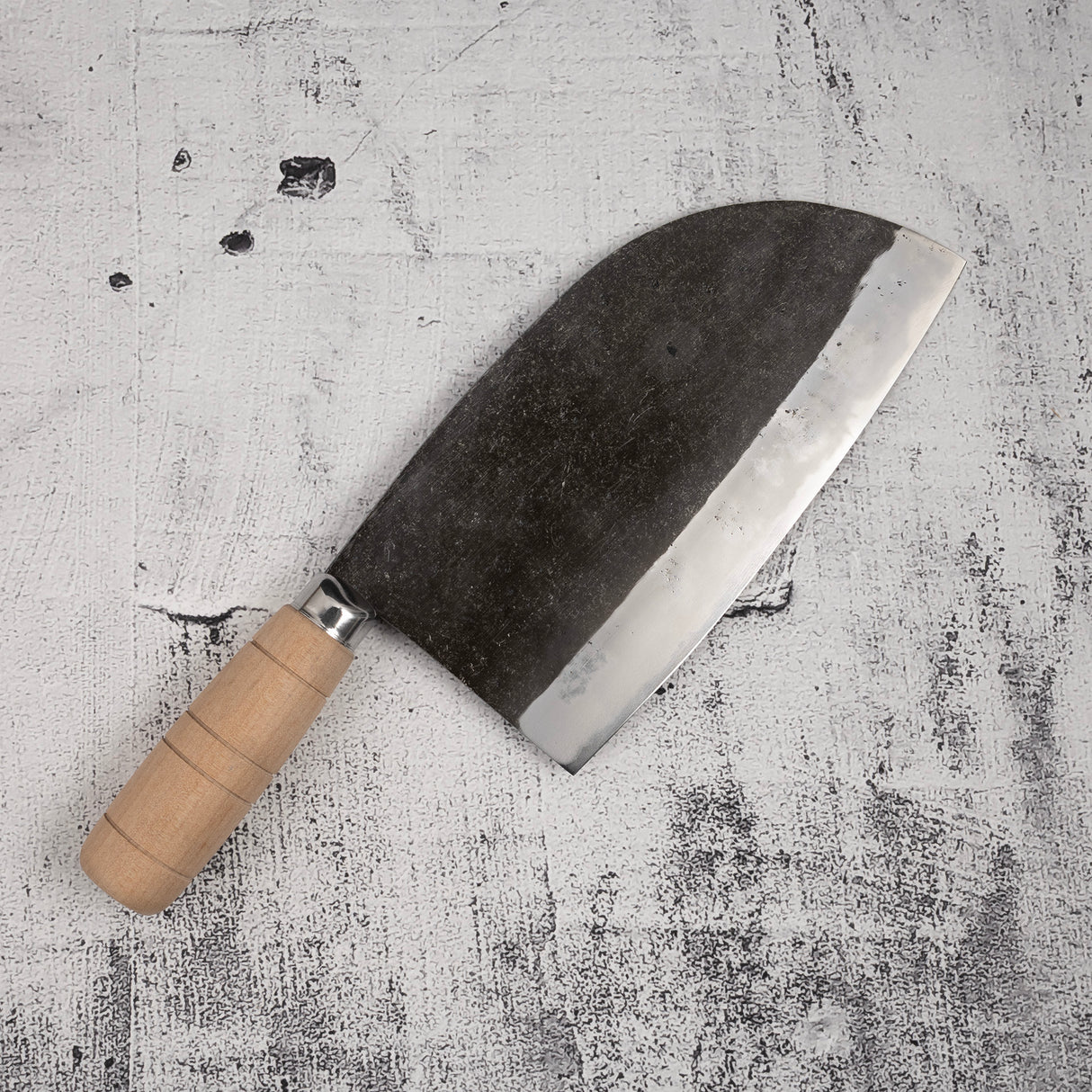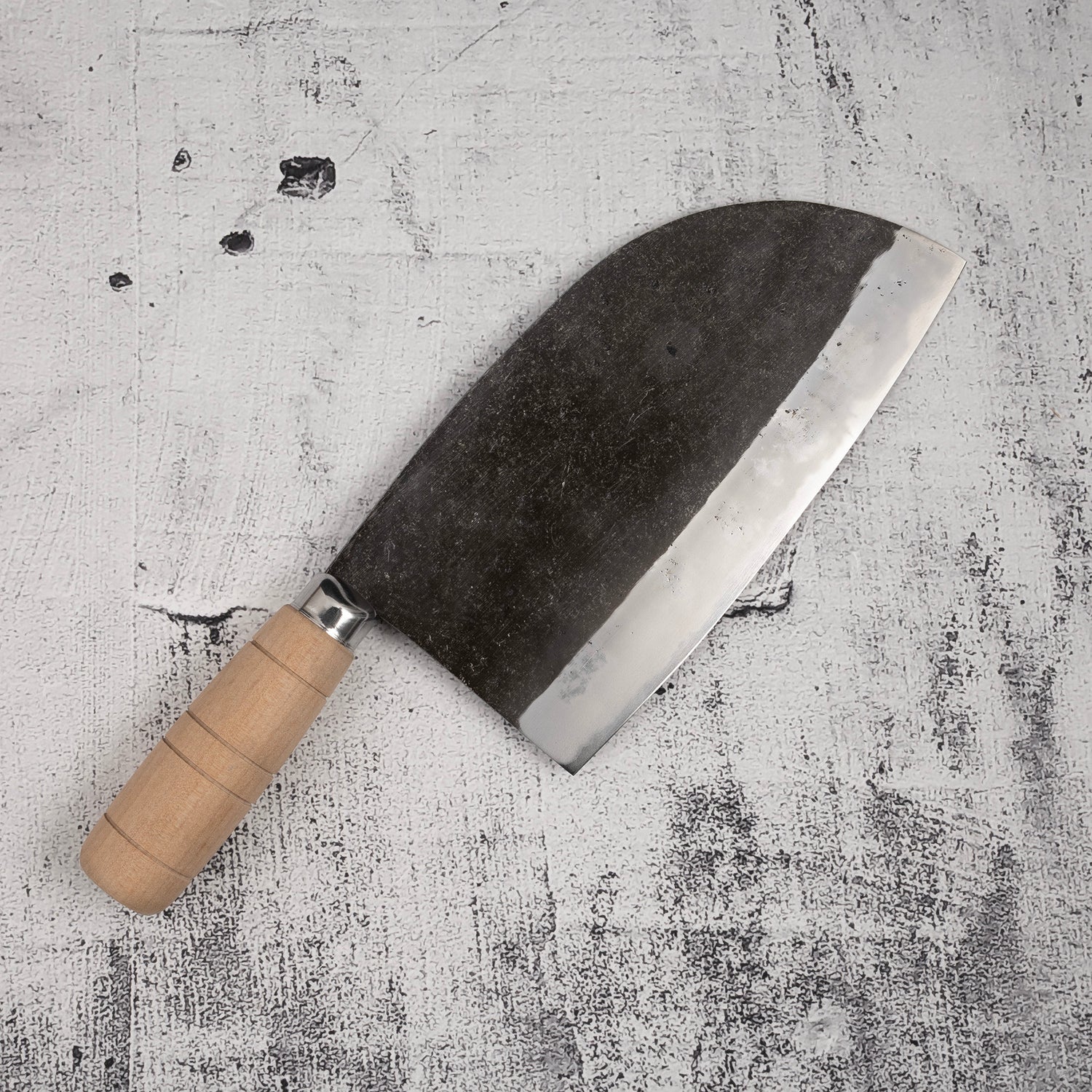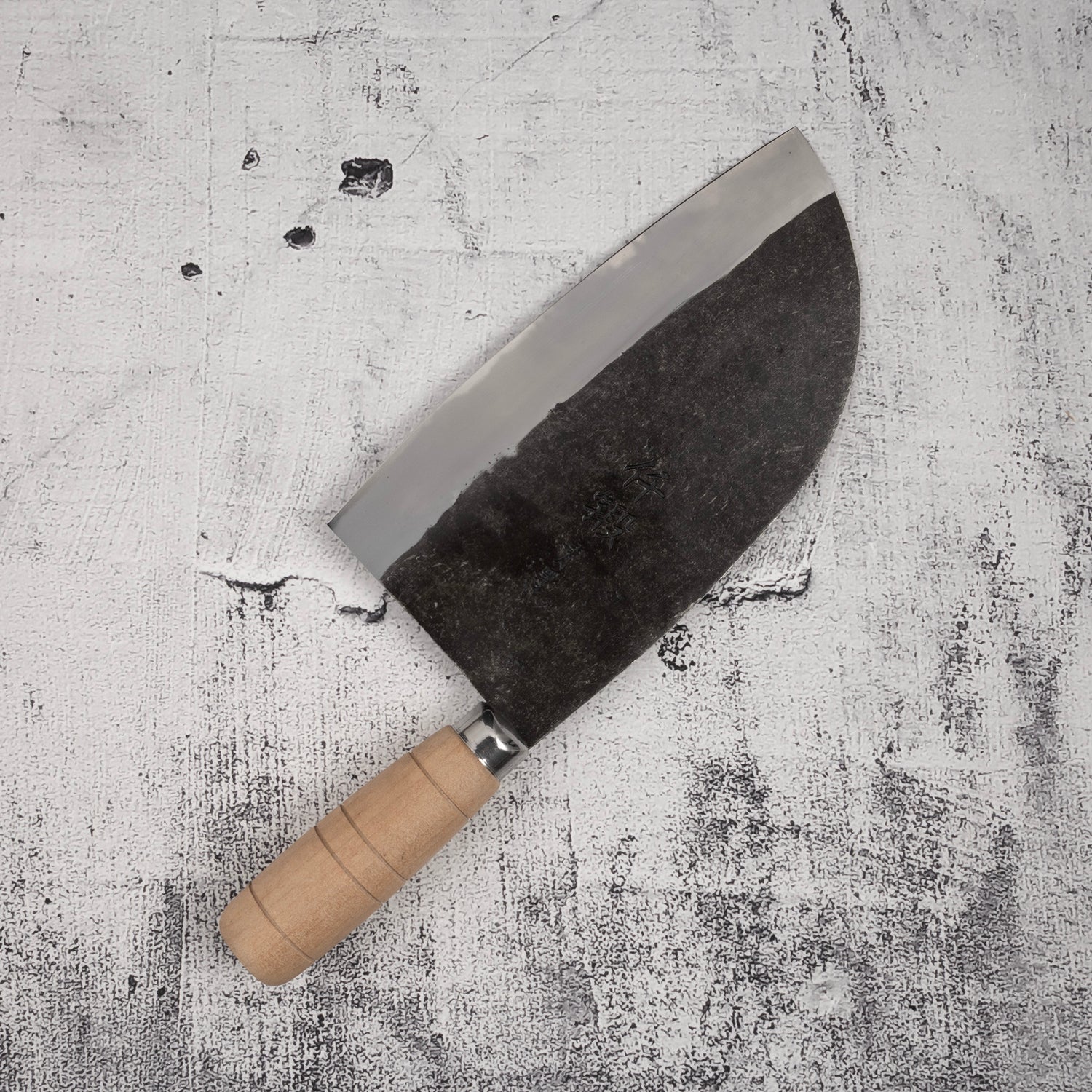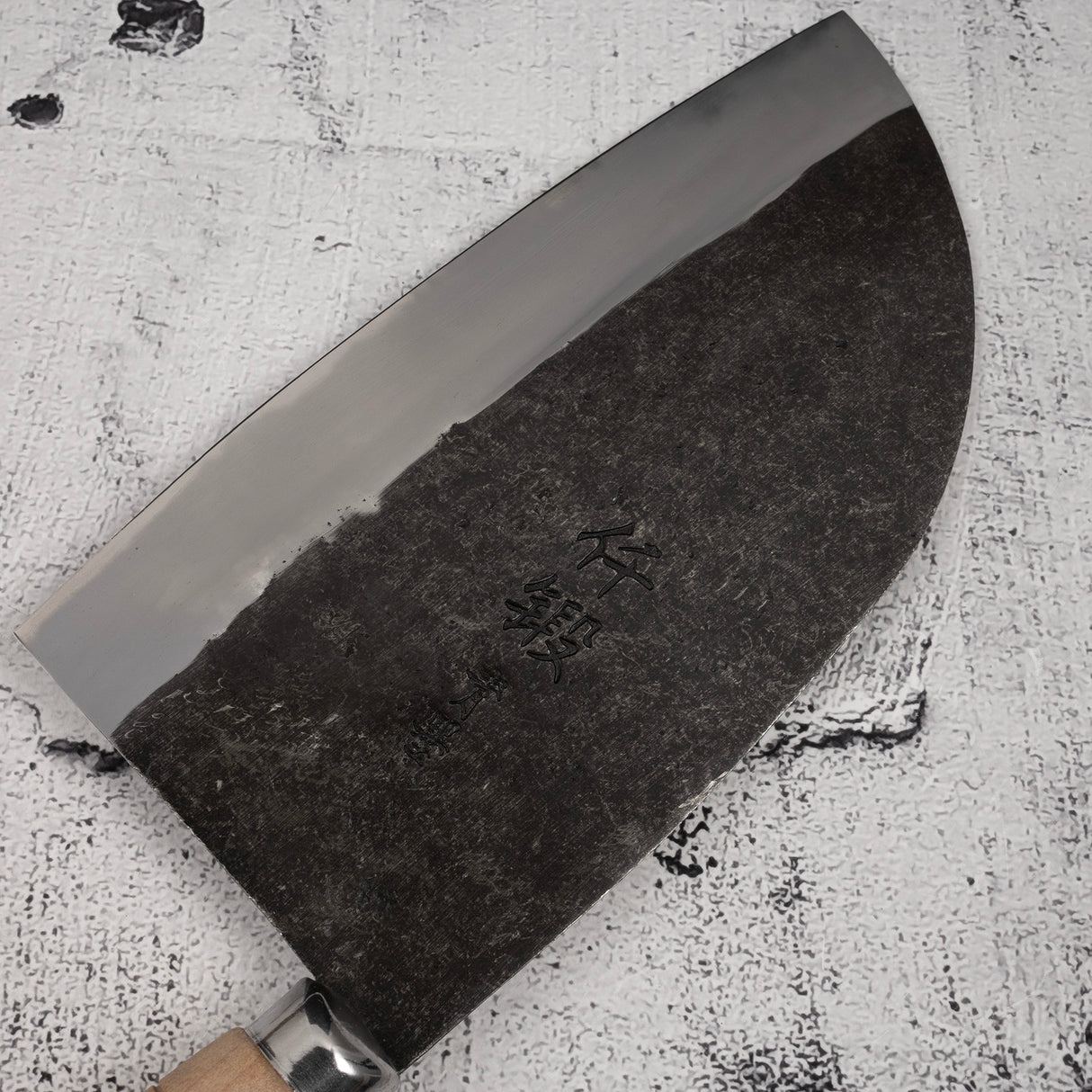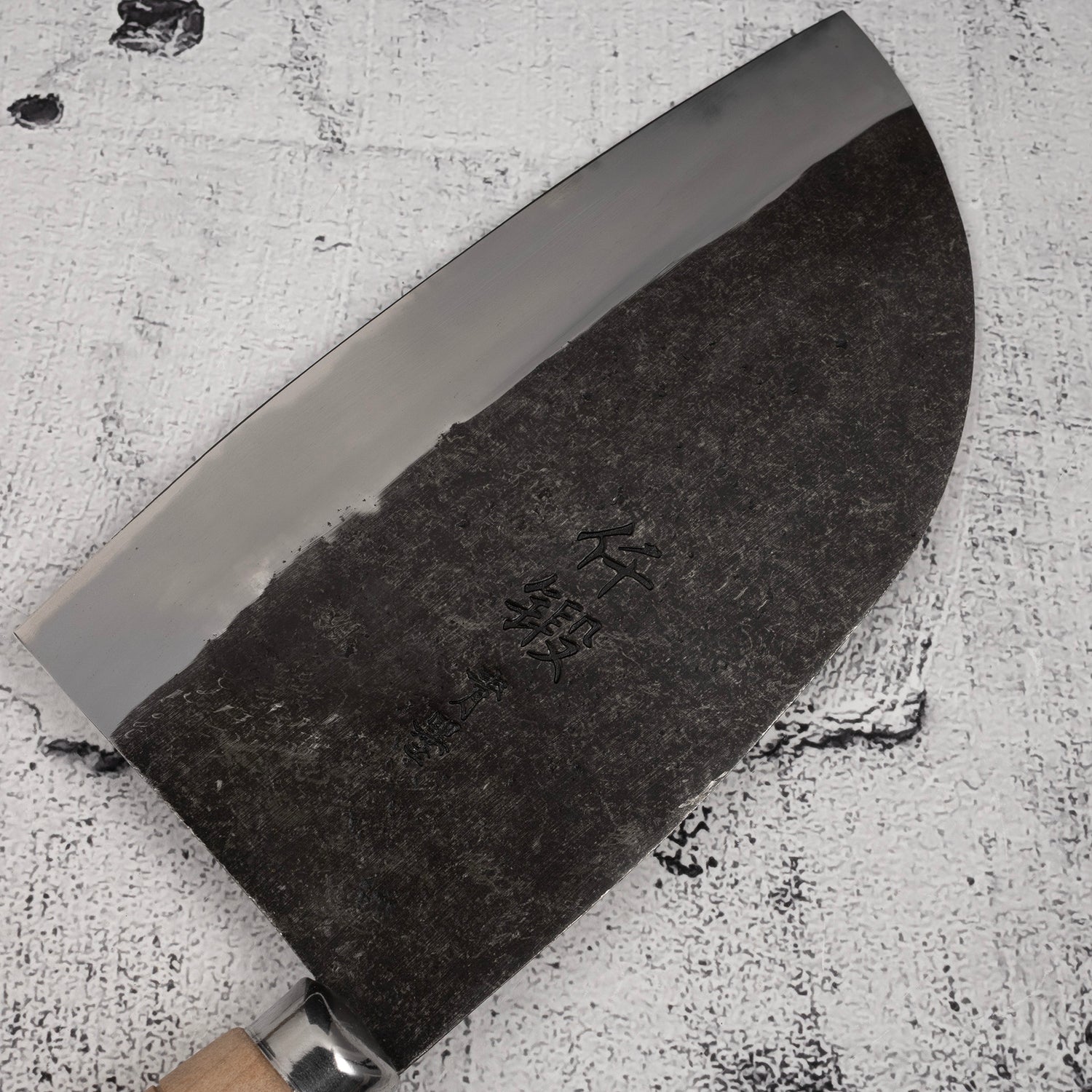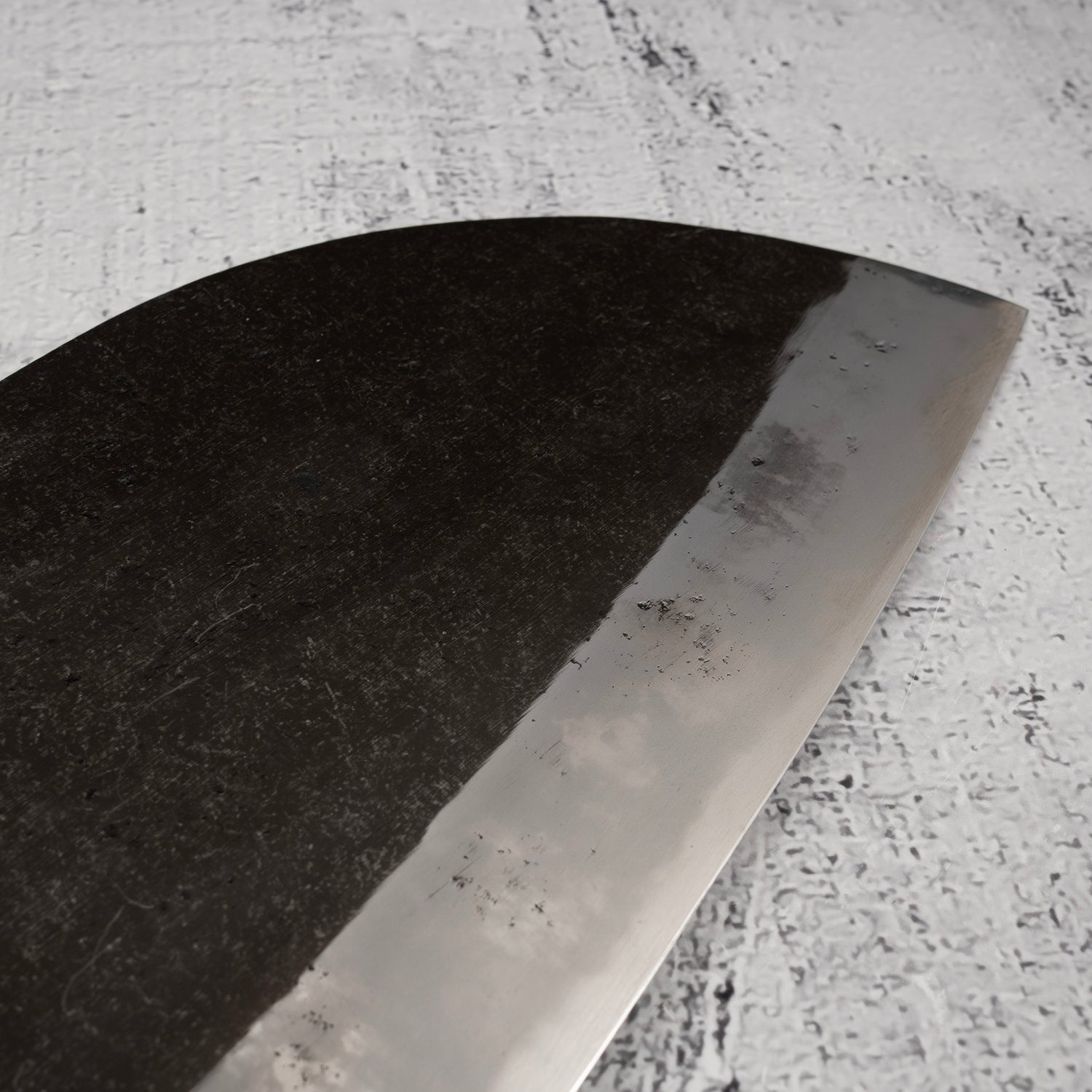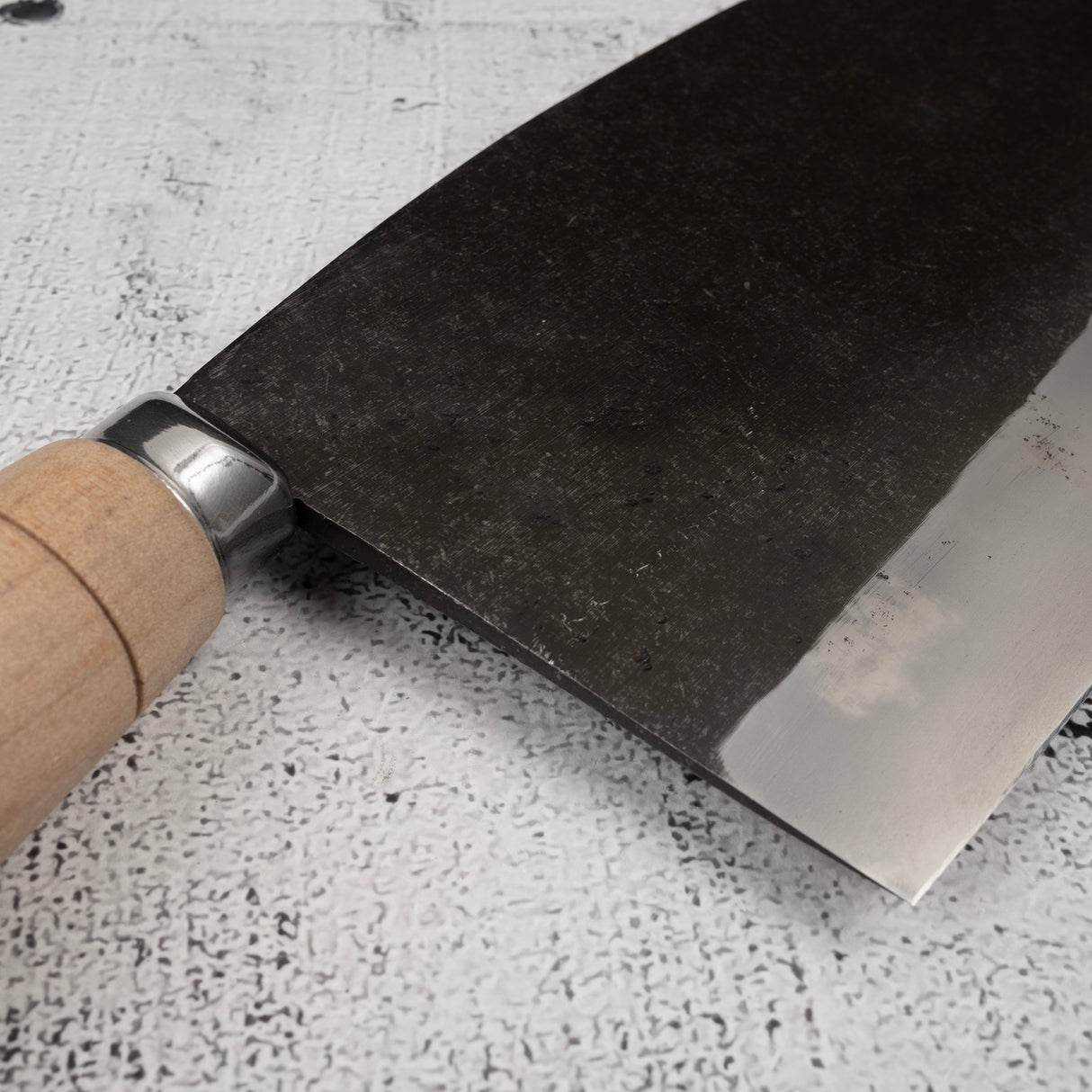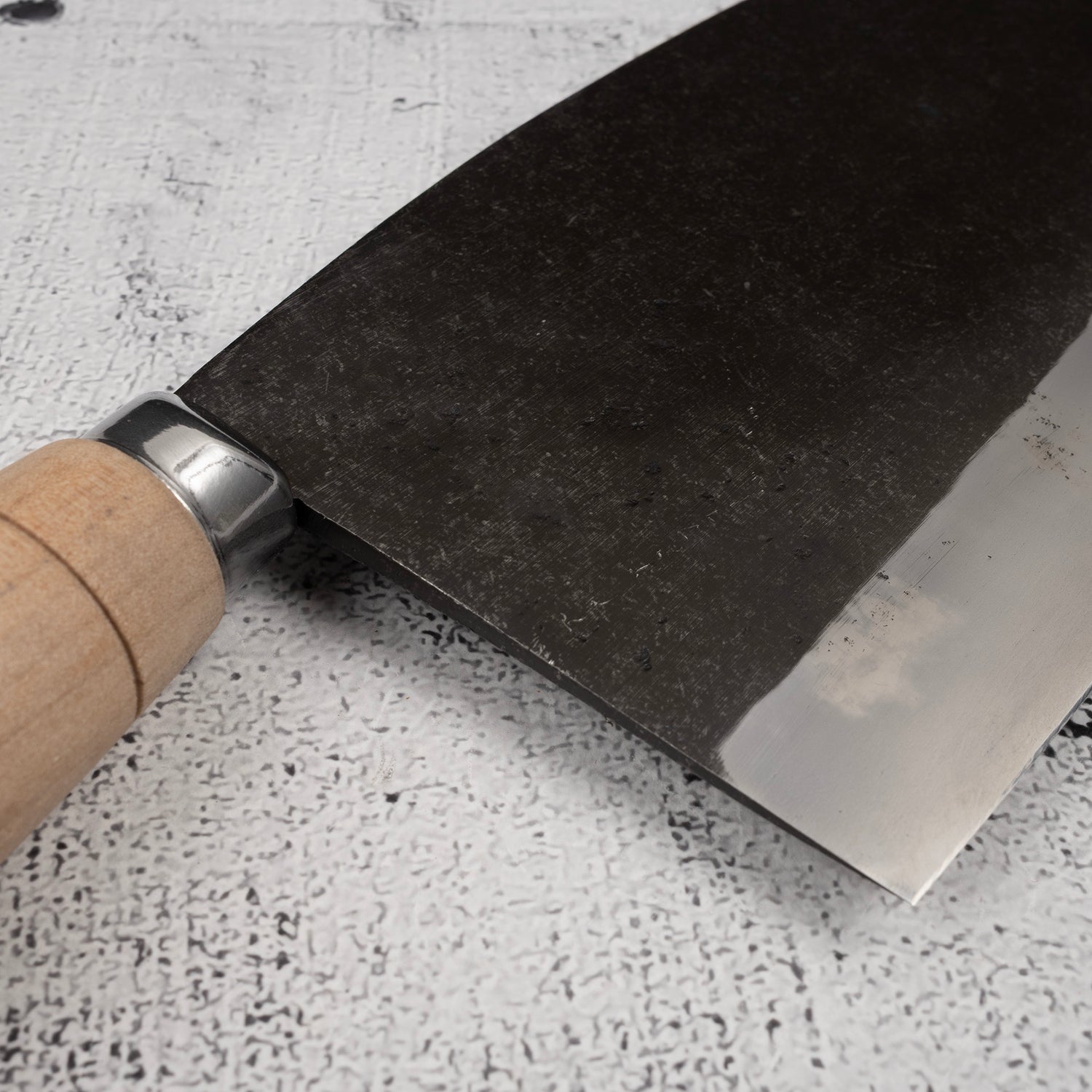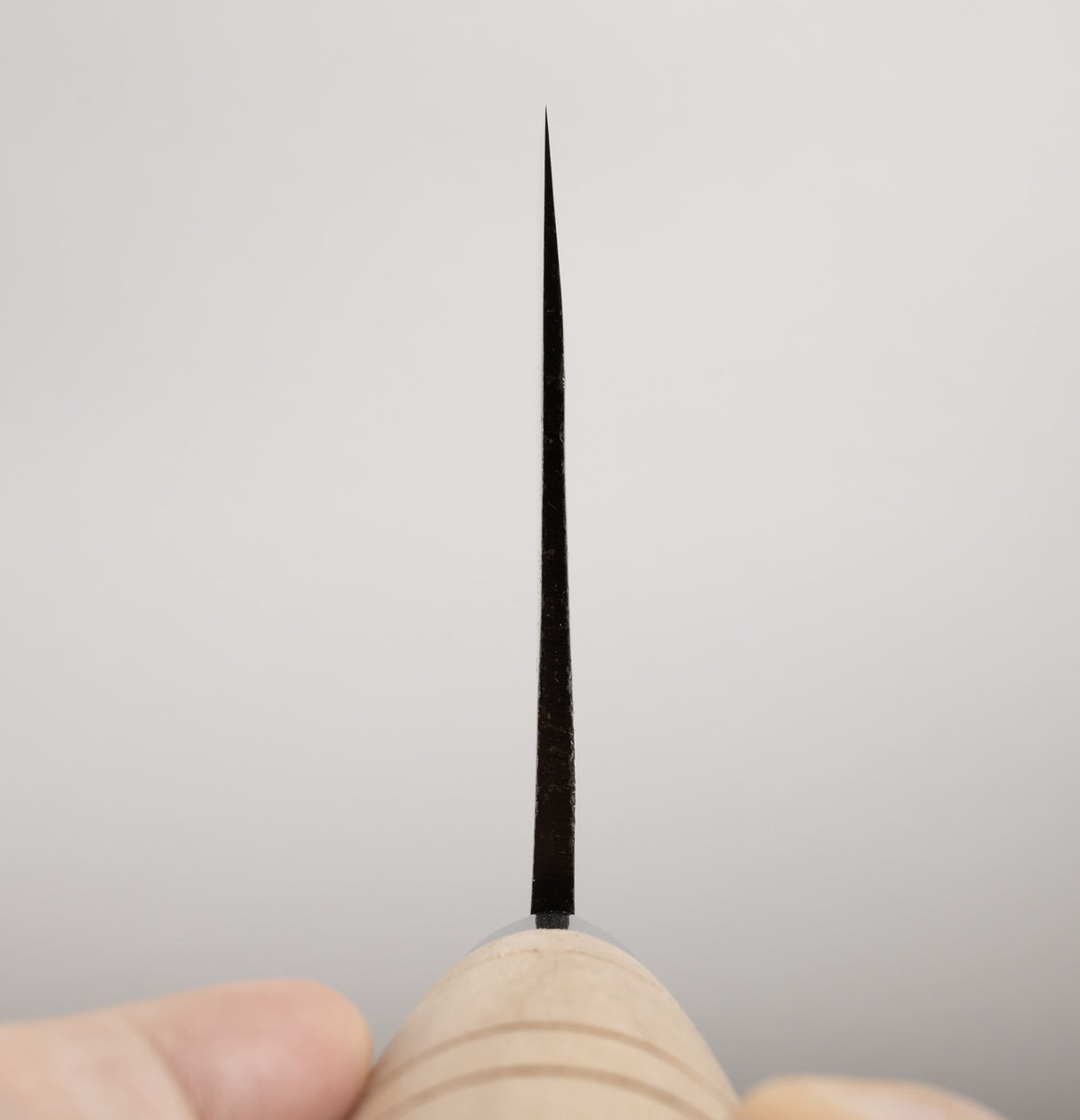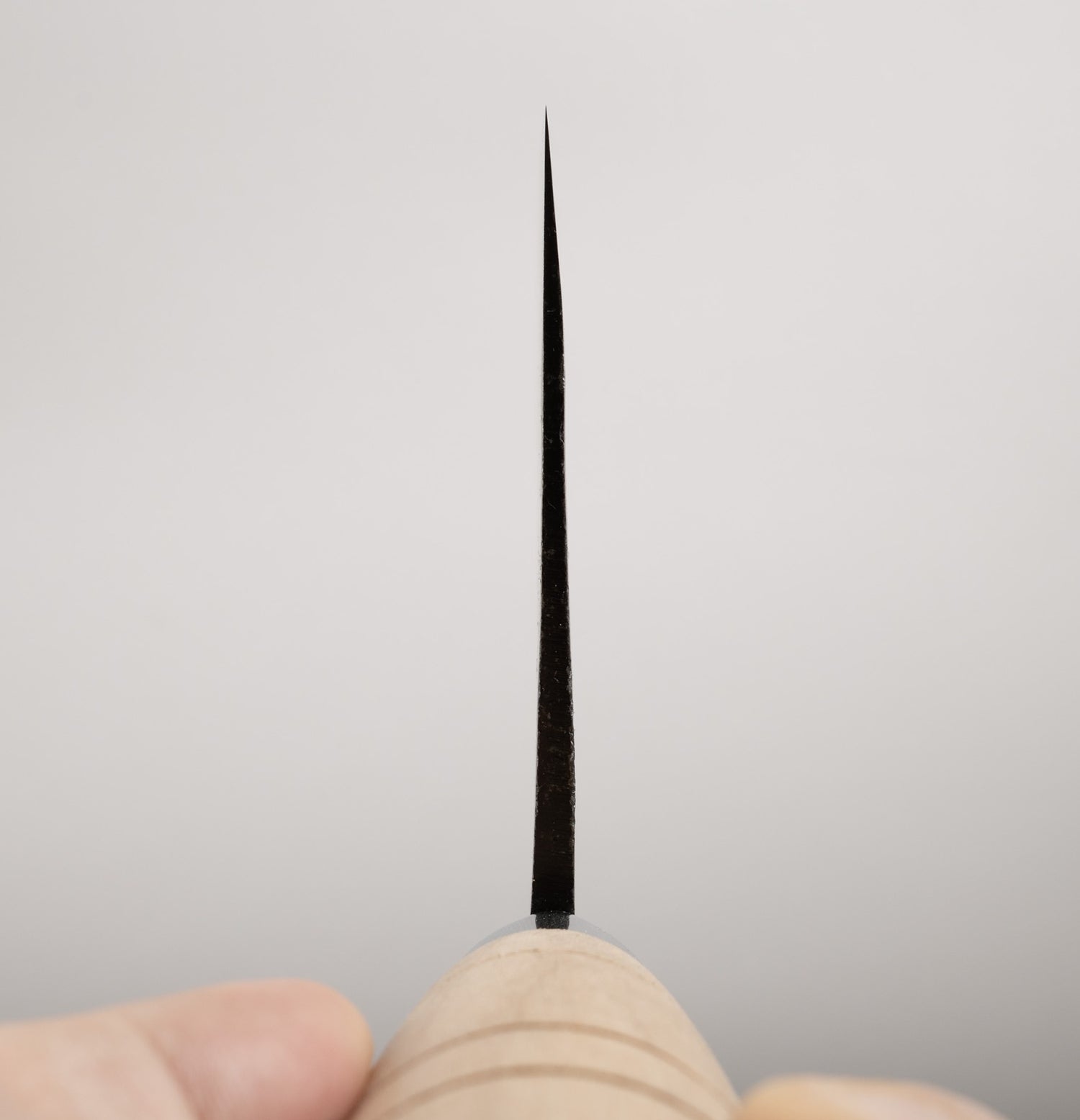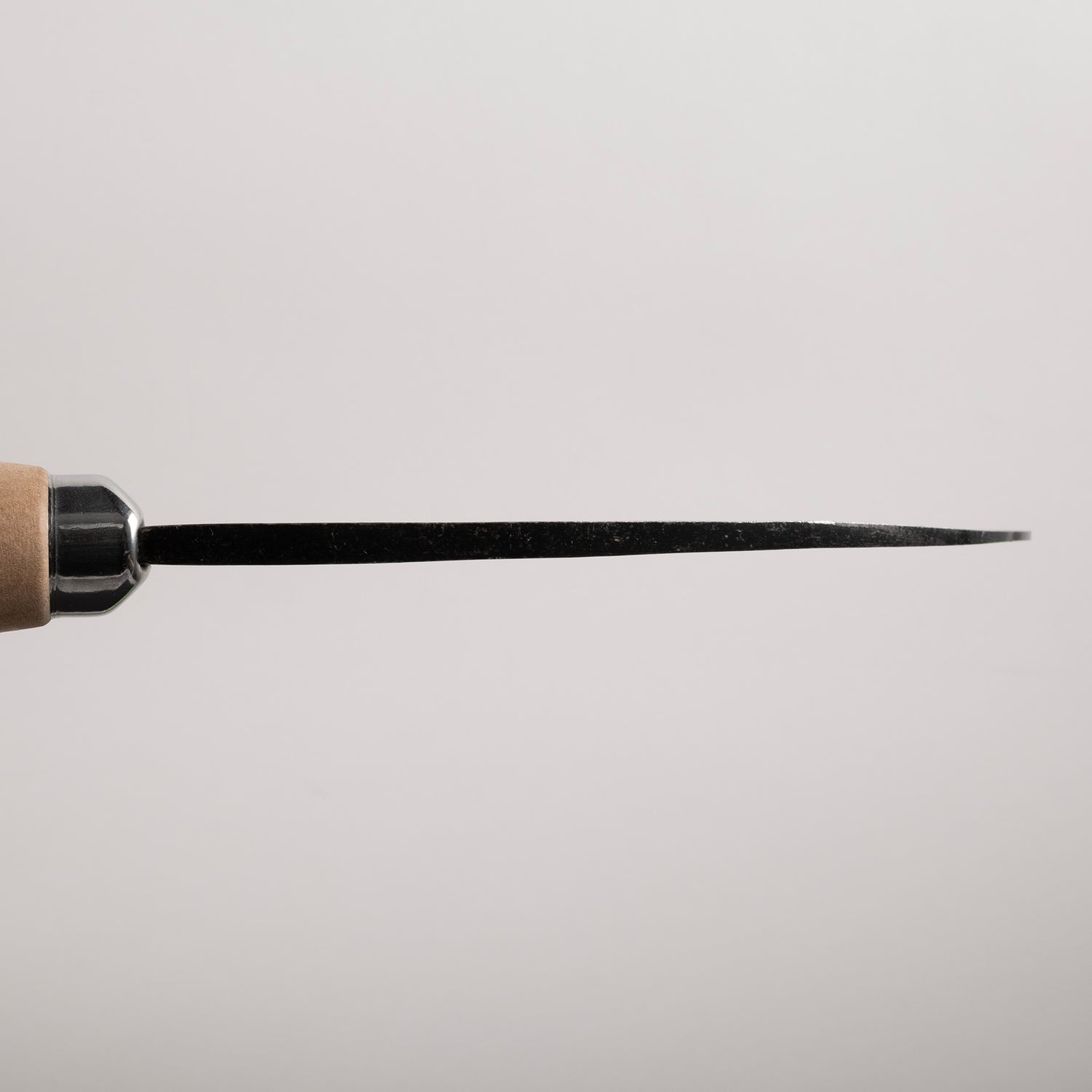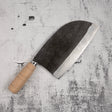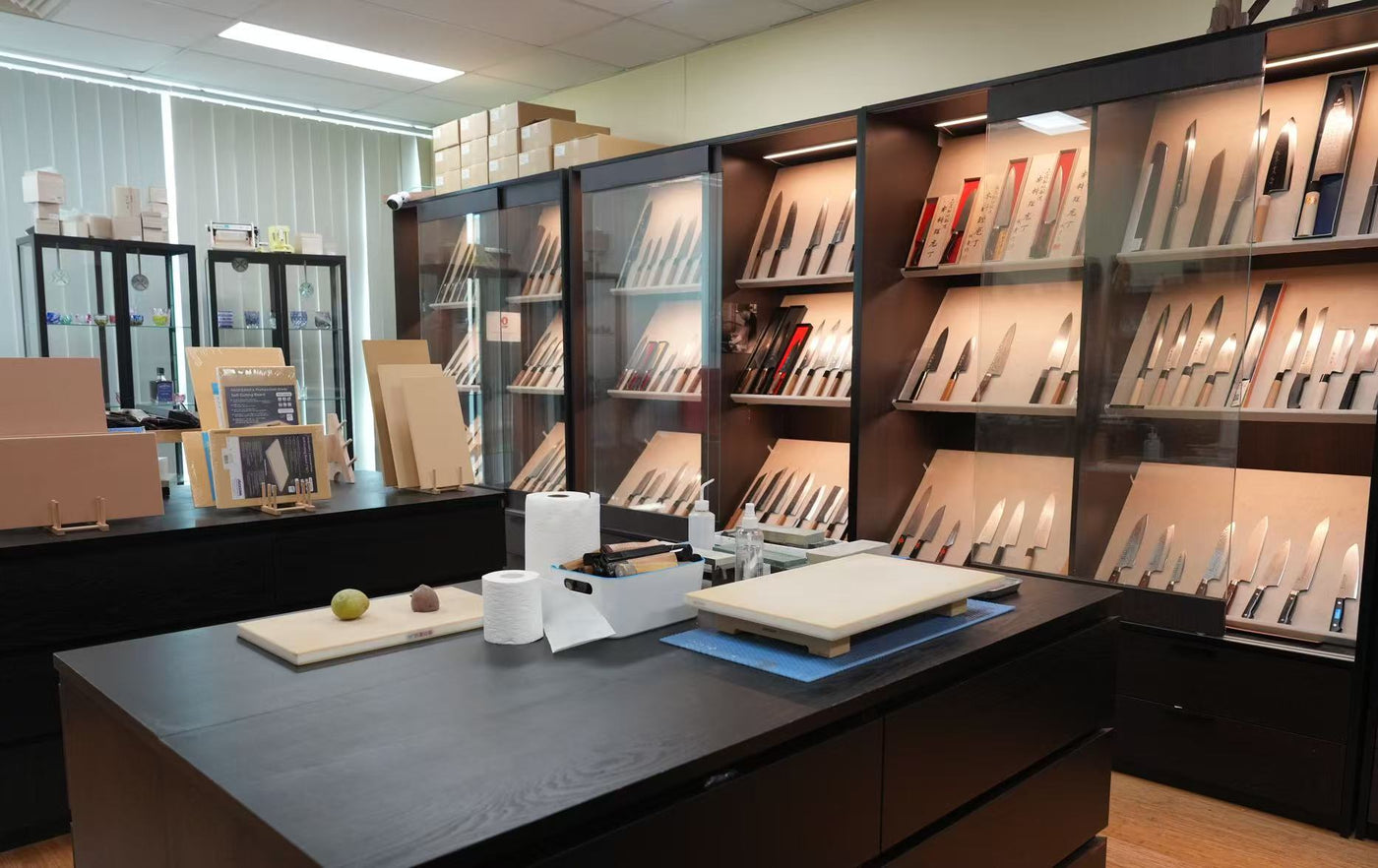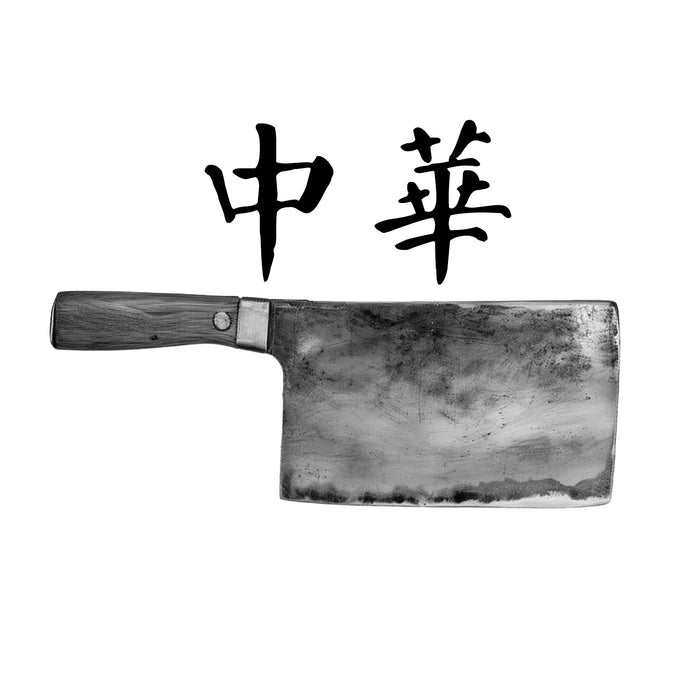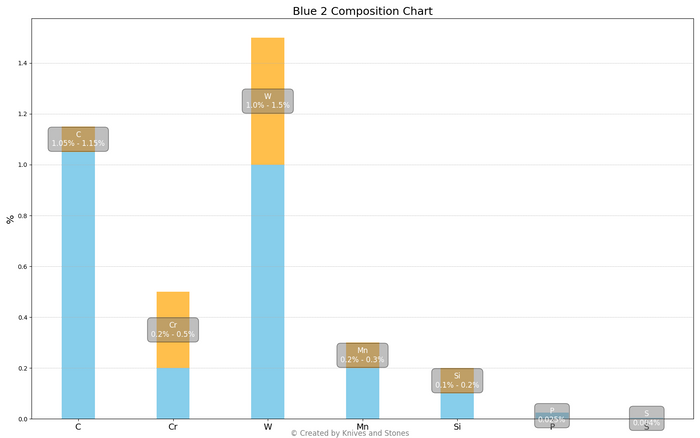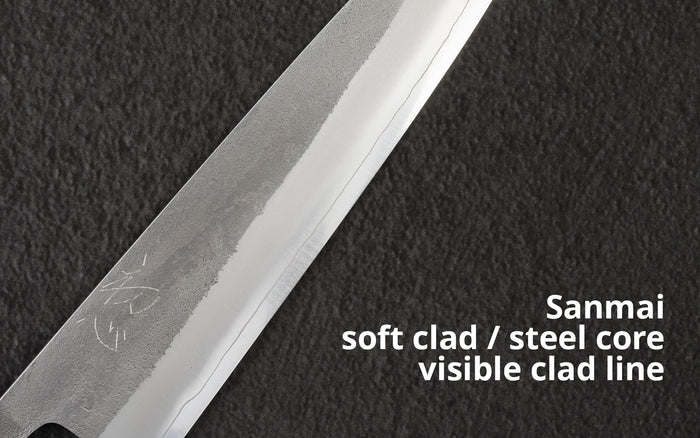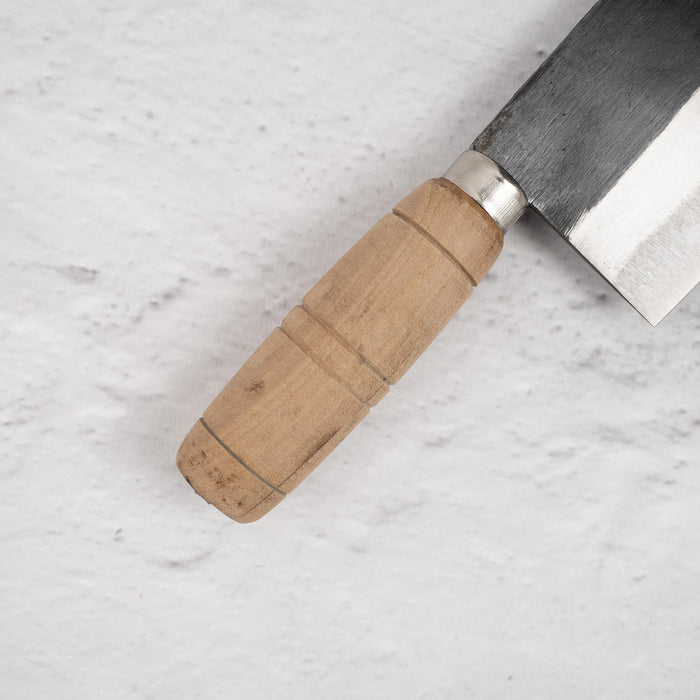Sentan Blue 2 Kurouchi Stainless Clad series is the sister line of the White 2 cleavers under the same brand, it keeps the low maintenance stainless Sanmai structure, changes the core steel to the Blue 2 and now has a more uniform Kurouchi finish. Featuring a variety of different profiles, this is a line that can easily fulfil your need for Chinese cleavers regardless of the specific task you need to complete.
There is an existing blank in the market of Chinese cleavers. From what we can see, Japanese makers rarely forge this type of knife and they tend to create a blade that has a different sectional profile compared to Chinese ones. This leads to different cutting behaviour and often heavier weight. On the other hand a reputable maker like CCK would forge their knife down to the thickness of a leaf with excellent cutting performance and balance, but the lower edge retention and high maintenance can often put off many potential users.
This is a line that is designed in house by Knives and Stones to fulfil this blank, our aim was to create a series of authentic Chinese cleavers, while incorporating the characteristics and performances you would find on a fine Japanese knife. We chose the classic Hitachi Blue 2 carbon steel for its high carbon content, then a layer of stainless cladding was forged on each side to create a low maintenance blade. As a result, we get an aggressive cutting edge made with a pretty hard carbon steel that is only exposed on the very edge of the blade, most of the blade would be free from rusting or patina and even if the exposed carbon steel rusts, they can be removed easily by sharpening.
The blade is forged into shape before the final bevel is put on, and by looking at the front of the knife, you can see there is a “S” shape contour on each side of the blade. The spine starts thick, giving the knife the stiffness it needs when doing precise cut, it then tapers down to reduce the weight of the blade so it is not tiring to cut for an extensive amount of time. The blade then thickens up again at the beginning of the bevel, this allows it to have some volume so it can build the geometry that we desire.
We chose a rather strong convex grind as the primary bevel geometry, it emphasises on food release rather than low thickness behind the edge. When slicing with these knives, there will be a very positive release, the slice of food will curl sideways and fall off the blade easily without much chance of sticking to the side of the knife. The wedging issue can be mitigated by the cutting method, as the common way of cutting with Chinese cleaver is a strong push cut, the momentum of the blade can usually push through the food without getting stuck halfway.
This line offers two different profiles other than the standard 175mm and 195mm rectangular cleavers. The bone hacking cleaver with a raised tip and thickened edge allows more energy delivered in the chopping motion while having the necessary strength to cut through some decent sized bones without chipping (like chicken or duck bones). The “Tall Santoku” is more useful in butchery, having a more clearly defined tip allows it to perform precise dissection and carving in these scenarios.
This Blue 2 line is our answer to the demand of a great workhorse chinese cleaver, it combines many features we believe are useful and it also offers many different profiles to fit the needs of different users. I have to mention they are not the most beautiful knives you can find because at the end of the day, they are still hand forged products. We opt for performance and value instead of beauty, so you can get these very organic looking, great performing knives at a very reasonable price.


